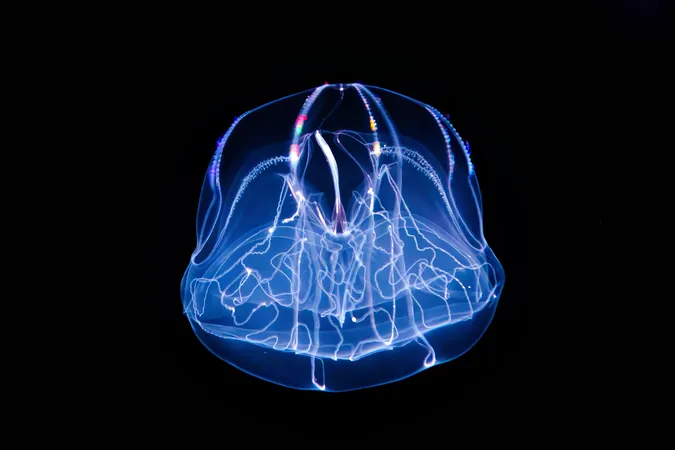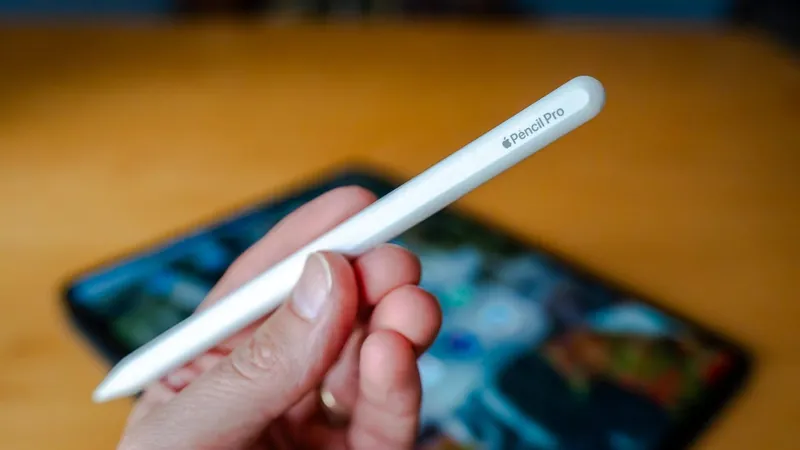
Mind-Blowing Discovery: Comb Jellies Can Heal Through Mysterious Fusion!
2024-10-08
Author: John Tan
Mind-Blowing Discovery: Comb Jellies Can Heal Through Mysterious Fusion!
In a fascinating revelation from the deep blue, researchers have uncovered that comb jellies, known scientifically as ctenophores, possess an astonishing ability—when injured, they can not only regenerate but also seamlessly fuse with other damaged ctenophores! These creatures, which have inhabited our oceans for over half a billion years, are not just visually stunning with their translucent bodies and captivating bioluminescence; they are also biological wonders that challenge our understanding of healing and regeneration.
Kei Jokura, a marine researcher from the University of Exeter, made this groundbreaking observation while studying a notably large specimen in a controlled seawater tank used for ctenophore research. Upon closer inspection, he realized this creature was, in fact, two ctenophores that had fused. “Some anatomical features were doubled, which was my first clue. I was amazed to find that they could integrate into one organism,” Jokura stated.
Exploring the Mechanics of Fusion
This research team embarked on a series of experiments to explore the implications of this fusion capability. After observing the fused individuals responding to stimulus, they conducted deliberate fusion experiments by immobilizing pairs of healthy ctenophores and bringing them in close proximity. Remarkably, they documented how the two organisms gradually merged their membranes, nervous systems, and even synchronized their muscle contractions, achieving full synchronization within two hours!
However, not all systems merged perfectly. The digestive systems remained independent, each ctenophore processing food at its own pace. Waste removal also happened separately, leading to quirky moments where the two organisms had different "toilet times." Out of ten fused pairs, nine successfully integrated, with time-lapse footage capturing the extraordinary process.
Why Can Ctenophores Fuse?
This astonishing capability raises questions about its evolutionary context. Ctenophores are among the simplest multicellular organisms, allowing for smooth cellular integration compared to more complex beings. Their neurons, lacking synapses, might facilitate easy electrical coupling during fusion—a key advantage in this process, Jokura explains.
Additionally, the weak or absent allorecognition system in ctenophores might play a role. Unlike humans, whose bodies typically reject foreign tissues, ctenophores’ biological makeup allows them to integrate cells without triggering an immune response.
Implications For Science and Medicine
The discoveries surrounding the fusion of ctenophores hold weighty implications for our understanding of biological regeneration. This unique characteristic could inspire new medical applications, potentially leading to advancements in regenerative medicine where tissue repair and grafting techniques are crucial.
However, experts caution—while the idea of merging injured sea creatures sounds like a plot from a science fiction thriller, the reality is far more nuanced. The rarity of such interactions in the wild suggests that this fusion ability may be more of a biological curiosity rather than a common survival tactic.
As research continues, scientists like Marianna Rodriguez-Santiago from Colorado State University stress the importance of further study. “We’re unsure whether this ability is an advantageous trait or just a byproduct of their simple biology. It’s an exciting area for future research and understanding of early multicellular life,” she notes.
Conclusion
The world of ctenophores is not just a spectacle of nature but a significant frontier in marine biology. Their ability to regenerate and fuse raises questions about life’s building blocks and how far the marvels of evolution can take us. As we delve deeper into the oceanic mysteries, who knows what other astonishing discoveries await? Could this be the key to unlocking human regenerative capabilities? The ocean still holds many secrets!




 Brasil (PT)
Brasil (PT)
 Canada (EN)
Canada (EN)
 Chile (ES)
Chile (ES)
 España (ES)
España (ES)
 France (FR)
France (FR)
 Hong Kong (EN)
Hong Kong (EN)
 Italia (IT)
Italia (IT)
 日本 (JA)
日本 (JA)
 Magyarország (HU)
Magyarország (HU)
 Norge (NO)
Norge (NO)
 Polska (PL)
Polska (PL)
 Schweiz (DE)
Schweiz (DE)
 Singapore (EN)
Singapore (EN)
 Sverige (SV)
Sverige (SV)
 Suomi (FI)
Suomi (FI)
 Türkiye (TR)
Türkiye (TR)